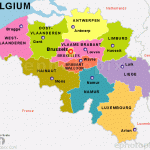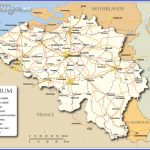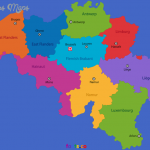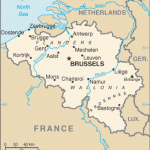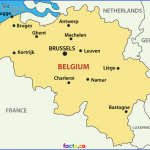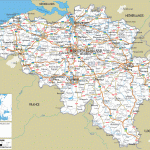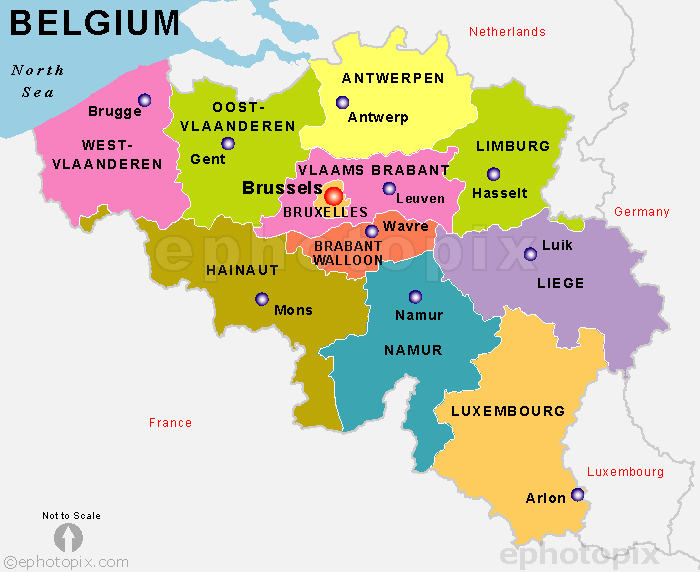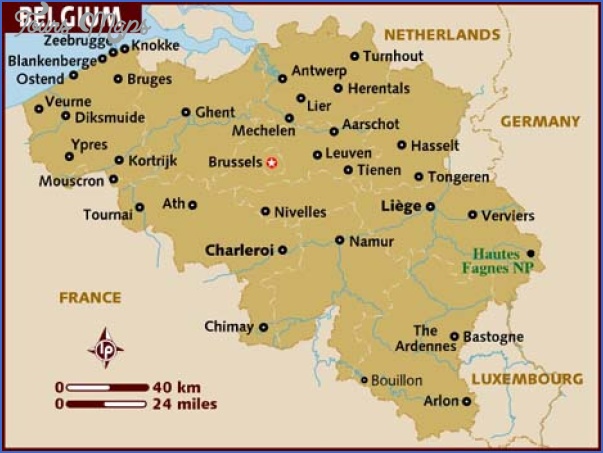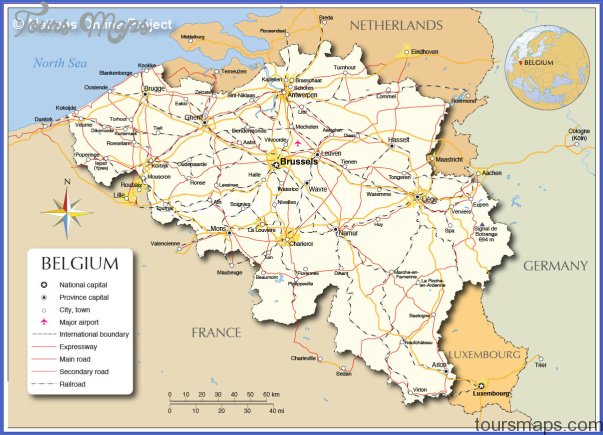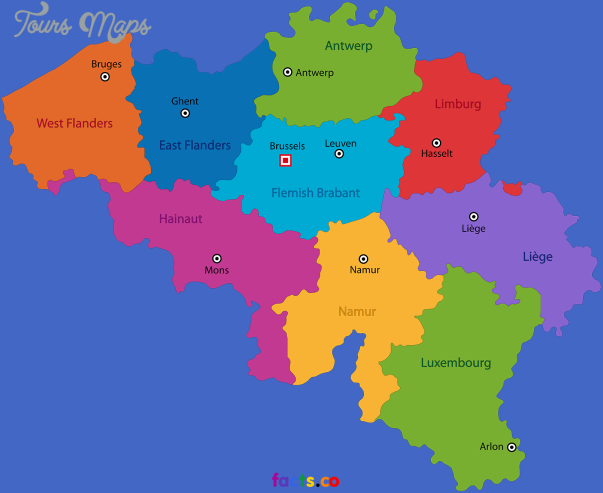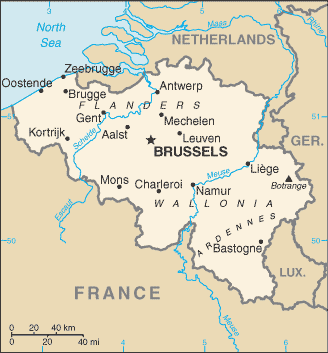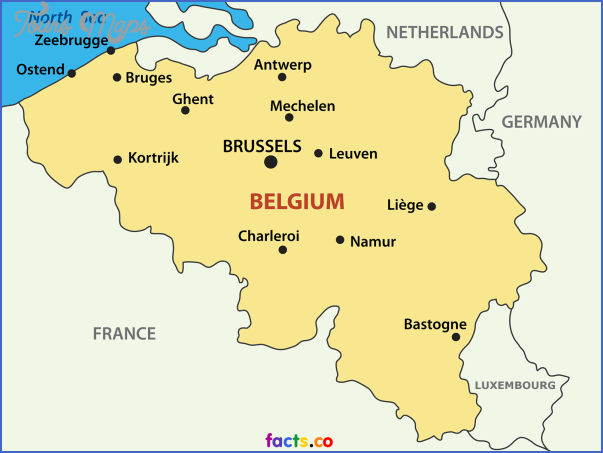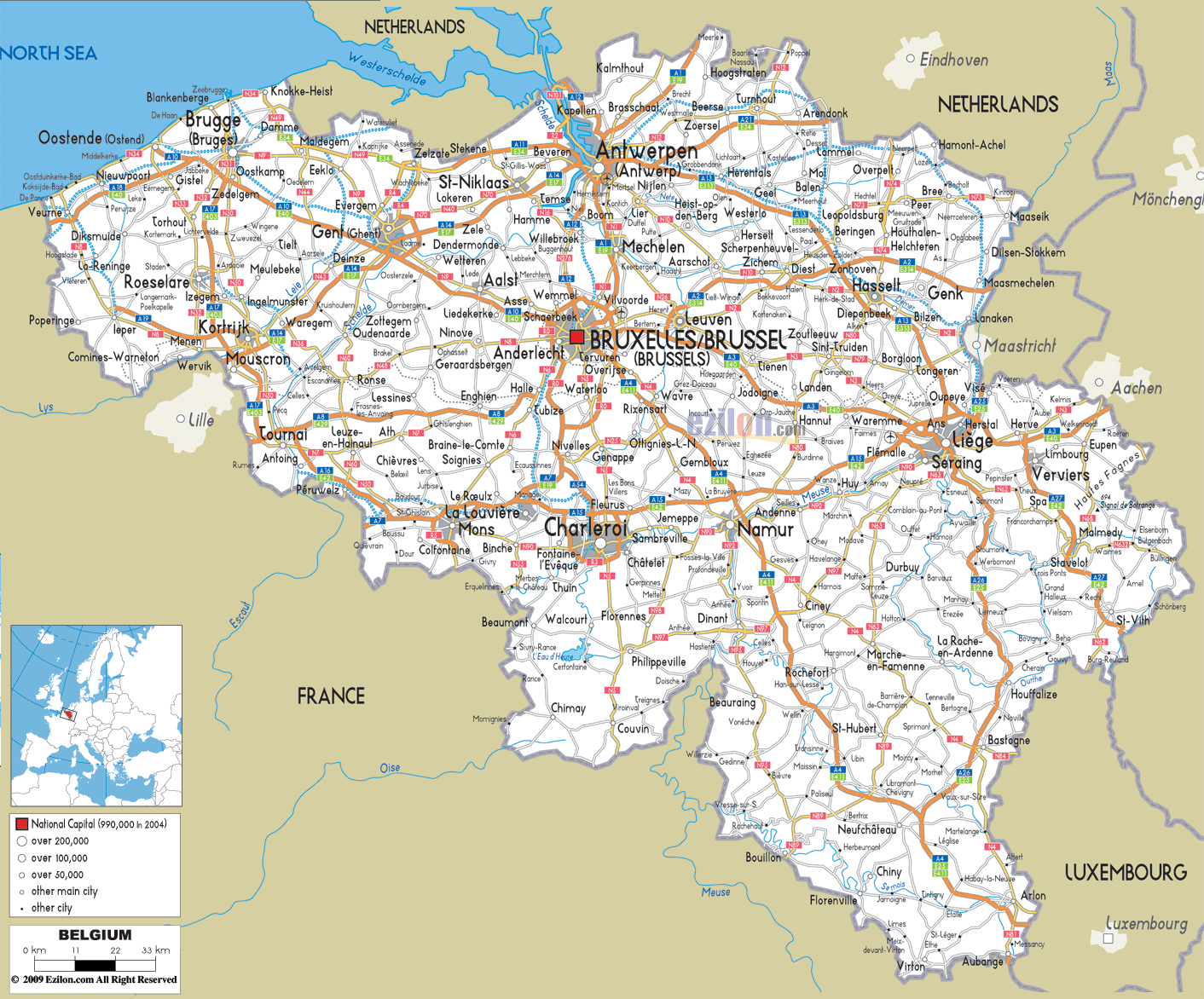GHENT
The ‘Queen of the Flanders’, which name it owes to its cloak of flowers, churches, halls and patrician residences, is modernising just as feverishly as its sister cities. Ghent, which has for all time dreamed of access to the sea, which fought for that access with an iron and stubborn will in the days of Jacques van Artevelde, has now had its wish fulfilled. Its port is now accessible to vessels of seventy-two thousand tons by means of the Ghent-North Sea canal, which has engendered the construction, on a site of 6,278 acres, of a waterside steelworks, Sidmar. This maritime steel concern will revitalise the economy of East Flanders, based entirely upon flax and cotton spinning since the days when Lievin Bauwens introduced the utilisation of English textile machines.
Liege on the Meuse which is its animated and industrial thoroughfare.
Bird’s eye view of the ancient city of Ghent, heart of the Belgian cotton industry.
Belgium Map Photo Gallery
SAMBRE-ET-MEUSE
The Sambre-et-Meuse valley, which has regressed since the coal crisis, continues to be a model of the typical industrial scene, with its blast-furnaces, steelworks, rolling-mills and mechanical engineering workshops, riverside glass manufactories, and lead, copper and zinc refineries. Three towns dominate this black and red valley, one of the most densely-populated and most ancient in Europe: Mons, the intellectual capital of the Belgian Black Country, Charleroi which, with its Labour University, is the nursery of skilled craftsmen and enjoys worldwide repute in mechanical and electrical engineering and, to the east, the biggest of the three, Liege. The city of the Prince-Bishops, divided by the gleaming avenue of the Meuse, the ‘Ardent City’, proud of its charters and of its age-old friendship with France, is rich in churches but even richer in factories which, at night, gird it with a belt of fire. ‘Water and coal made Liege’, say the historians. This continues to be true. The Albert Canal, linking Liege with Antwerp, connects it with countries over the seas. An oil port has been built alongside the port facilities. A new industry has been added to the range of activities bequeathed by a very long line of crafts. Cockerill, Fabrique Nationale ‘FN’ at Herstal, and the Val-St-Lambert crystal-works are known the wide world over.
Liege is in the centre of a powerful metallurgical concentration.
The Providence works, Charleroi, belonging to the Cockerill group.
Chevron refineries at Feluy.
Maybe You Like Them Too
- Explore Góra Kalwaria, Poland with this detailed map
- Explore Gumdag, Turkmenistan with this detailed map
- Explore Telfes im Stubai, Austria with this detailed map
- Explore Langenselbold, Germany with this detailed map
- Explore Krotoszyn, Poland with this detailed map

